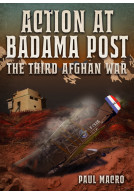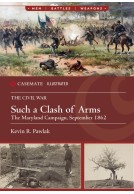Action at Badama Post (Hardback)
The Third Afghan War, 1919
Imprint: Casemate Publishers
Pages: 272
Illustrations: 30–50 images, 5 maps
ISBN: 9781612007595
Published: 14th June 2019
(click here for international delivery rates)
Order within the next 8 hours, 11 minutes to get your order processed the next working day!
Need a currency converter? Check XE.com for live rates
The 3rd Afghan War in 1919 was the only time that the Afghans invaded British India during Britain’s long history of conflict in Afghanistan and along the North-West Frontier. It was a campaign that cost the lives of well over 1,000 British and Indian troops.
This is the story of an unknown action of this little-known war, an aircraft crash and rescue. An aircraft of 20 Sqn RAF was lost, whilst investigating a gathering of tribesman. The crew were rescued and the majority of the aircraft was recovered by members of the Kurram Militia and 22 Battery Motor Machine Gun Service. It was an all-arms action – the lives of 2 airmen were saved at the cost of an Indian Militiaman and an unknown number of Afghan tribesmen. Above all it is an action which typifies the experience of a virtually unknown group of soldiers, 22 Battery of the Motor Machine Gun Service. They had volunteered to serve as Motor Machine Gunners in France, had been through an intense and very competitive selection process, frequently expending considerable sums of their own money just to attend selection interviews, and had suddenly found themselves despatched half way round the globe to the heat, dust, snows and monsoons of India and the North-West Frontier.
This book looks at the background to the conflict, the Kurram Militia, the history of the squadron and the lives of the key players. Whilst this was not the only action the 22 Battery of the Motor Machine Gun Service fought during the 3rd Afghan War, this one was recorded in the account of A/Sjt Ernest ‘Bill’ Macro, who was in charge of the section of 22 Battery despatched to Badama Post in late July 1919. This is his story, and the stories of the other men for whom the climax of their experience in the 3rd Afghan War came during the action at Badama Post.
Action at Badama Post shines a light onto a previously unknown tactical action from the little known Third Afghan War. It brings that war to life through the eyes and experiences of the soldier on the ground and those flying above them. The narrative weaves together the lives of those who fought at Badama Post, describing both how they came to be there and what befell them afterwards. In doing so the reader is taken from the early days of motorcycling in the British Army, through the landings at V Beach in Gallipoli, to the skies over the Western Front and thence to the North West Frontier of India. Whilst not drawing direct comparisons, Action At Badama Post highlights that many of the challenges faced by today's soldiers have endured from the time of the Third Afghan War, whether of introducing new equipment and tactics, of operating over extended lines of communications or of conducting operations in areas where there is little constructive governance or rule of law. A tale of soldiers and soldiering, Action at Badama Post is highly recommended for anyone with an interest in the history of the British and Indian Armies, the Machine Gun Corps and the Motor Machine Gun Service, and of conflict on the North West Frontier of India. A very interesting read in deed.
Ian Barbour
Ian Barbour















